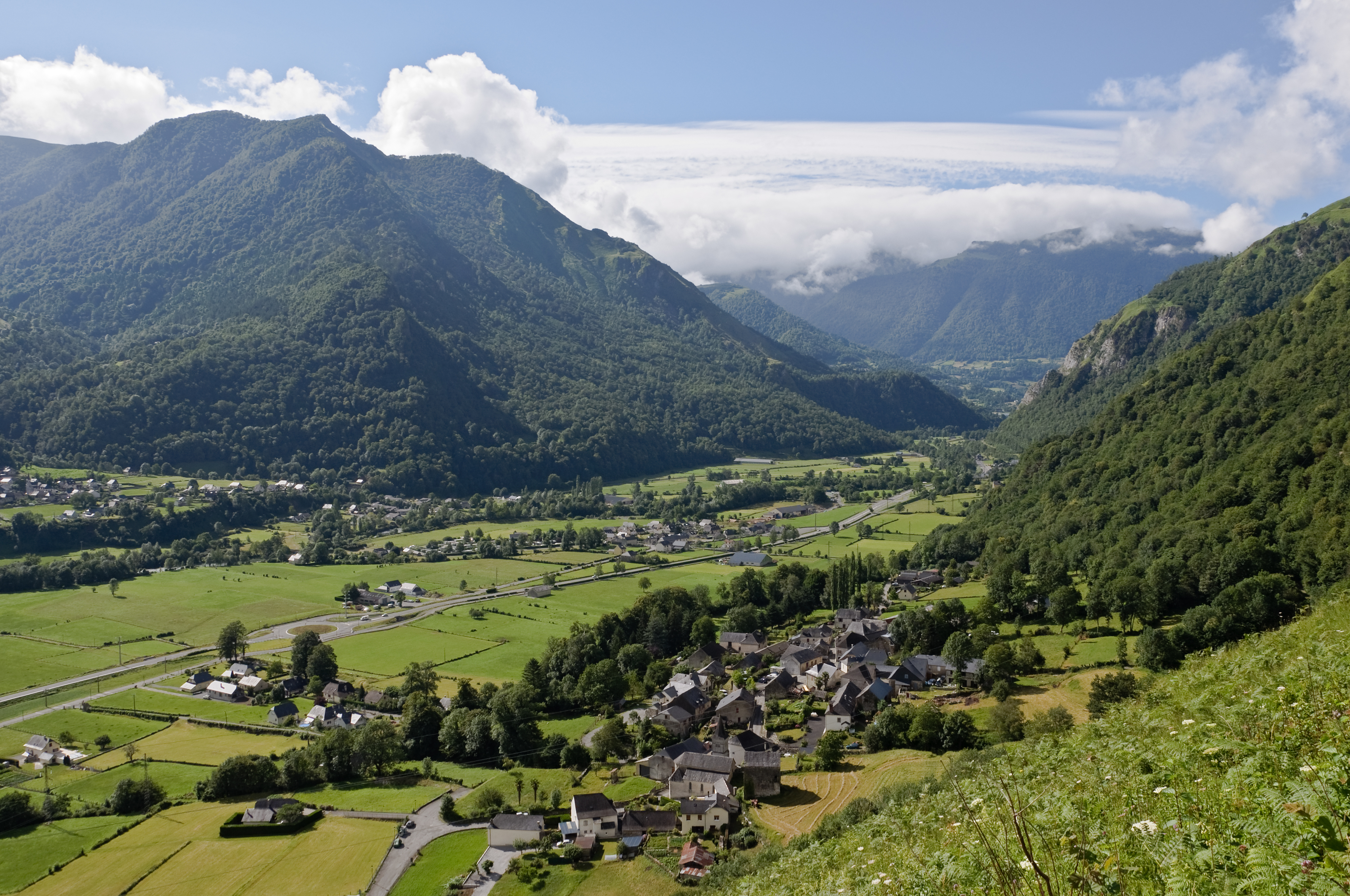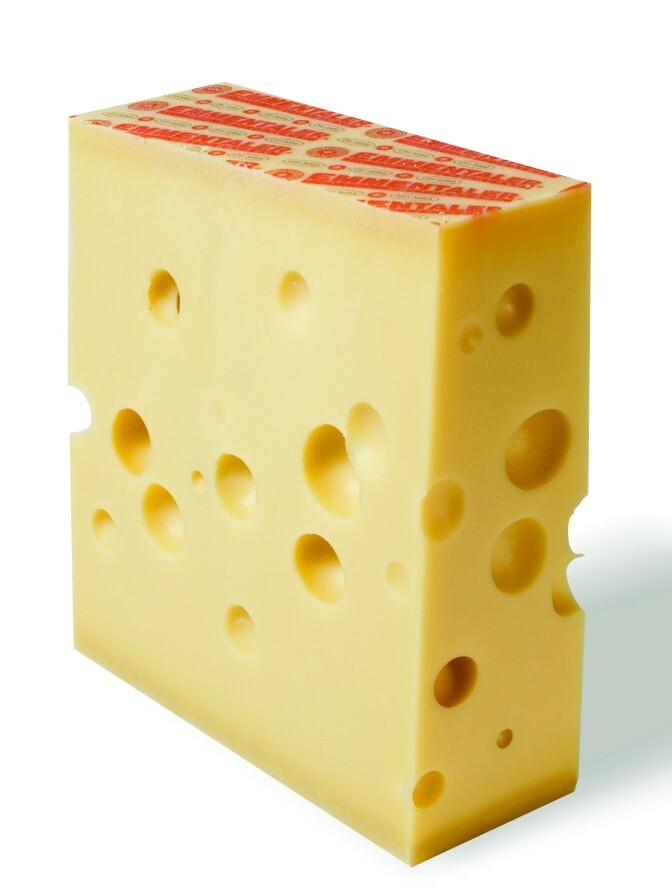|
Ossau-Iraty
Ossau-Iraty is an Occitan- Basque cheese made from sheep milk. Origin Ossau-Iraty or Esquirrou is produced in south-western France, in the Northern Basque Country and in Béarn. Its name reflects its geographical location, the Ossau Valley in Béarn and the Irati Forest in the Basque Country. AOC status It has been recognized as an appellation d'origine contrôlée (AOC) product since 1980. It is one of three sheep's milk cheeses granted AOC status in France (the others are Roquefort and Brocciu). It is of ancient origin, traditionally made by the shepherds in the region. Production Production techniques are very much in the essence of old world methods whereby the sheep still graze mountain pastures. The milk must come from the breeds Basco-béarnaise, Red-face Manech, or Black-face Manech. This is an uncooked cheese made through pressing. When offered as a farm-produced cheese (known as ''fromage fermier'', ''fromage de ferme'' or ''produit fermier'') the AOC regulatio ... [...More Info...] [...Related Items...] OR: [Wikipedia] [Google] [Baidu] |
Ossau-Iraty
Ossau-Iraty is an Occitan- Basque cheese made from sheep milk. Origin Ossau-Iraty or Esquirrou is produced in south-western France, in the Northern Basque Country and in Béarn. Its name reflects its geographical location, the Ossau Valley in Béarn and the Irati Forest in the Basque Country. AOC status It has been recognized as an appellation d'origine contrôlée (AOC) product since 1980. It is one of three sheep's milk cheeses granted AOC status in France (the others are Roquefort and Brocciu). It is of ancient origin, traditionally made by the shepherds in the region. Production Production techniques are very much in the essence of old world methods whereby the sheep still graze mountain pastures. The milk must come from the breeds Basco-béarnaise, Red-face Manech, or Black-face Manech. This is an uncooked cheese made through pressing. When offered as a farm-produced cheese (known as ''fromage fermier'', ''fromage de ferme'' or ''produit fermier'') the AOC regulatio ... [...More Info...] [...Related Items...] OR: [Wikipedia] [Google] [Baidu] |
List Of Sheep Milk Cheeses
This is a list of sheep milk cheeses. Sheep milk cheese is prepared from sheep milk (or ewe's milk), the milk of domestic sheep. The milk is commonly used to make cultured dairy products, such as cheese. Sheep milk cheeses * Abbaye de Belloc * Abertam cheese * Anari cheese * Anthotyros * Basco-béarnaise * Beenleigh Blue cheese * Beyaz peynir * Brânză de burduf * Brocciu * Bryndza * Bryndza Podhalańska * Bundz * Cabrales cheese * Caciocavallo * Caciotta * Caș * Casciotta d'Urbino * Castelo Branco cheese * Casu marzu * Cazelle de Saint Affrique * Cherni Vit * Corleggy Cheese * Croglin * Crozier Blue * Dolaz cheese * Duddleswell cheese * Etorki * Feta * Fine Fettle Yorkshire * Ġbejna * Graviera * Halloumi * Idiazabal cheese * Jibneh Arabieh * Kadchgall * Kars gravyer cheese * Kashkaval * Kasseri * Kefalograviera * Kefalotyri * La Serena cheese * Lanark Blue * Lavaş cheese * Lighvan cheese * Mancheg ... [...More Info...] [...Related Items...] OR: [Wikipedia] [Google] [Baidu] |
Idiazabal Cheese
Idiazabal is a pressed cheese made from unpasteurized sheep milk, usually from Latxa and Carranzana sheep in the Basque Country and Navarre. It has a somewhat smokey flavor, but is usually un-smoked. The cheese is handmade and covered in a hard, dark brown, inedible rind. It is aged for a few months and develops a nutty, buttery flavor, eaten fresh, often with quince jam. If aged longer, it becomes firm, dry and sharp and can be used for grating. The Denomination of Origin for Idiazabal cheese was created in 1987 and defines the basic regulations for the product's manufacture. Typically, unpasteurized milk from latxa breed of sheep is used, although in some cases the D.O. permits the use of milk from Carranzana breed, from the Encartaciones in Biscay. The D.O. also stipulates that the milk be curdled with the natural lamb rennet, and permits external smoking of the cheese. The cheeses produced in the following towns in accordance with all the D.O. regulations, are theref ... [...More Info...] [...Related Items...] OR: [Wikipedia] [Google] [Baidu] |
Basque Cuisine
Basque cuisine refers to the cuisine of the Basque Country and includes meats and fish grilled over hot coals, '' marmitako'' and lamb stews, cod, Tolosa bean dishes, paprikas from Lekeitio, '' pintxos'' (Basque ''tapas)'', Idiazabal sheep's cheese, '' txakoli'' ( sparkling white-wine), and Basque cider. A ''basquaise'' is a type of dish prepared in the style of Basque cuisine that often includes tomatoes and sweet or hot red peppers. Overview Basques have also been quick to absorb new ingredients and techniques from new settlers and from their own trade and exploration links. Jews expelled from Spain and Portugal created a chocolate and confectionery industry in Bayonne still well-known today, and part of a wider confectionery and pastry tradition across the Basque Country. Basques embraced the potato and the capsicum, used in hams, sausages and recipes, with pepper festivals around the area, notably Ezpeleta and Puente la Reina. Olive oil is more commonly used than ... [...More Info...] [...Related Items...] OR: [Wikipedia] [Google] [Baidu] |
Ossau Valley
The Ossau Valley (French: ''Vallée d'Ossau''; Gascon: ''Aussau'' / ''la vath d'Aussau'') is a valley of the French Pyrénées, in the Pyrénées-Atlantiques ''département''. Administration 18 communes belong to the Valley: Arudy, Aste-Béon, Béost, Bescat, Bielle, Bilhères, Buzy, Castet, Eaux-Bonnes, Gère-Bélesten, Izeste, Laruns, Louvie-Juzon, Louvie-Soubiron, Lys, Rébénacq, Sainte-Colome and Sévignacq-Meyracq. See also * Gave d'Ossau (river) * Pic du Midi d'Ossau * Col d'Aubisque The Col d'Aubisque ( oc, Còth d'Aubisca) (elevation ) is a mountain pass in the Pyrenees south of Tarbes and Pau in the department of the Pyrénées-Atlantiques, in the Aquitaine region of France.Chany, Pierre (1988), La Fabuleuse Histoire du T ... * Gourette * Ossau-Iraty (cheese) * Petit train d'Artouste References External links Landforms of Pyrénées-Atlantiques Valleys of France Nouvelle-Aquitaine region articles needing translation from French Wikipe ... [...More Info...] [...Related Items...] OR: [Wikipedia] [Google] [Baidu] |
Appellation D'origine Contrôlée
An appellation is a legally defined and protected geographical indication primarily used to identify where the grapes for a wine were grown, although other types of food often have appellations as well. Restrictions other than geographical boundaries, such as what grapes may be grown, maximum grape yields, alcohol level, and other quality factors may also apply before an appellation name may legally appear on a wine bottle label. The rules that govern appellations are dependent on the country in which the wine was produced. History The tradition of wine appellation is very old. The oldest references are to be found in the Bible, where ''wine of Samaria'', ''wine of Carmel'', ''wine of Jezreel'', or ''wine of Helbon'' are mentioned. This tradition of appellation continued throughout the Antiquity and the Middle Ages, though without any officially sanctioned rules. Historically, the world's first exclusive (protected) vineyard zone was introduced in Chianti, Italy in 1716 and ... [...More Info...] [...Related Items...] OR: [Wikipedia] [Google] [Baidu] |
French Products With Protected Designation Of Origin
French (french: français(e), link=no) may refer to: * Something of, from, or related to France ** French language, which originated in France, and its various dialects and accents ** French people, a nation and ethnic group identified with France ** French cuisine, cooking traditions and practices Fortnite French places Arts and media * The French (band), a British rock band * "French" (episode), a live-action episode of ''The Super Mario Bros. Super Show!'' * ''Française'' (film), 2008 * French Stewart (born 1964), American actor Other uses * French (surname), a surname (including a list of people with the name) * French (tunic), a particular type of military jacket or tunic used in the Russian Empire and Soviet Union * French's, an American brand of mustard condiment * French catheter scale, a unit of measurement of diameter * French Defence, a chess opening * French kiss, a type of kiss involving the tongue See also * France (other) * Franch, a surname * French ... [...More Info...] [...Related Items...] OR: [Wikipedia] [Google] [Baidu] |
Sheep's-milk Cheeses
Sheep's milk (or ewes' milk) is the milk of domestic sheep. It is commonly used to make cultured dairy products such as cheese. Some of the most popular sheep cheeses include feta (Greece), ricotta (Italy), and Roquefort (France). Sheep breeds Specialized dairy breeds of sheep yield more milk than other breeds. Common dairy breeds include: * East Friesian (Germany) * Sarda (Italy) * Lacaune (France) * British Milk Sheep (UK) * Chios (Greece) * Awassi (Syria) * Assaf (Israel) * Zwartbles (Friesland, Netherlands) In the U.S., the most common dairy breeds are the East Friesian and the Lacaune. Meat or wool breeds do not produce as much milk as dairy breeds, but may produce enough for small amounts of cheese and other products. Milk production period Female sheep (ewes) do not produce milk constantly. Rather, they produce milk during the 80–100 days after lambing. Sheep naturally breed in the fall, which means that a majority of lambs are born in the winter or early spring. ... [...More Info...] [...Related Items...] OR: [Wikipedia] [Google] [Baidu] |
French Cheeses
This is a list of French cheeses documenting the varieties of cheeses, a milk-based food that is produced in wide-ranging flavors, textures, and forms, which are found in France. In 1962, French President Charles de Gaulle asked, "How can you govern a country which has two hundred and forty-six varieties of cheese?" There is immense diversity within each variety of cheese, leading some to estimate between 1,000 and 1,600 distinct types of French cheese. French cheeses are broadly grouped into eight categories, 'les huit familles de fromage'. Protected designation of origin Under the Common Agricultural Policy of the European Union, certain established cheeses, including many French varieties, are covered by a protected designation of origin (PDO), and other, less stringent, designations of geographical origin for traditional specialities, such as the EU Protected Geographical Indication. The systems has largely replaced national systems, such as the French appellation d'origine con ... [...More Info...] [...Related Items...] OR: [Wikipedia] [Google] [Baidu] |
Eyes (cheese)
Eyes are the round holes that are a characteristic feature of Swiss-type cheese (e.g. Emmentaler cheese) and some Dutch-type cheeses. The eyes are bubbles of carbon dioxide gas. The gas is produced by various species of bacteria in the cheese. Swiss cheese In Swiss-type cheeses, the eyes form as a result of the activity of propionic acid bacteria (''propionibacteria''), notably ''Propionibacterium freudenreichii'' subsp. ''shermanii''.P.L.H. McSweeney, ''Biochemistry of Cheese Ripening: Introduction and Overview'', in: Fox, p. 349 These bacteria transform lactic acid into propionic acid and carbon dioxide, according to the formula: :3 Lactate → 2 Propionate + Acetate + CO2 + H2OT. Beresford, A. Williams; ''The Microbiology of Cheese Ripening'', in: Fox, p. 303 The CO2 so produced accumulates at weak points in the curd, where it forms the bubbles that become the cheese's eyes. Not all CO2 is so trapped: in an cheese, about 20 L CO2 remain in the eyes, while 60 L remain ... [...More Info...] [...Related Items...] OR: [Wikipedia] [Google] [Baidu] |




